|
The approaches described here often appear radical and even dangerous to more traditional horse people. The activities do have to be rationally reasoned and be designed for a beneficial purpose. However when properly applied the results are self-evident.
A critical element in these activities involves "reading" the horse. Horse puzzles and sensitivity problems need to be sufficient to challenge the horse, but not be so intense as to produce survival behavior. The object is to generate problem solving dendrites, not further reinforce flight or fight responses.
These types of exercises can also significantly improve handler / rider skills with respect to recognizing their horses' body language. As the handlers' ability to recognize their horses' body language improve along with the direction and level of energy applied in response to that body language, confidence and reliability can improve significantly.
Horse Puzzles (Obstacles.)
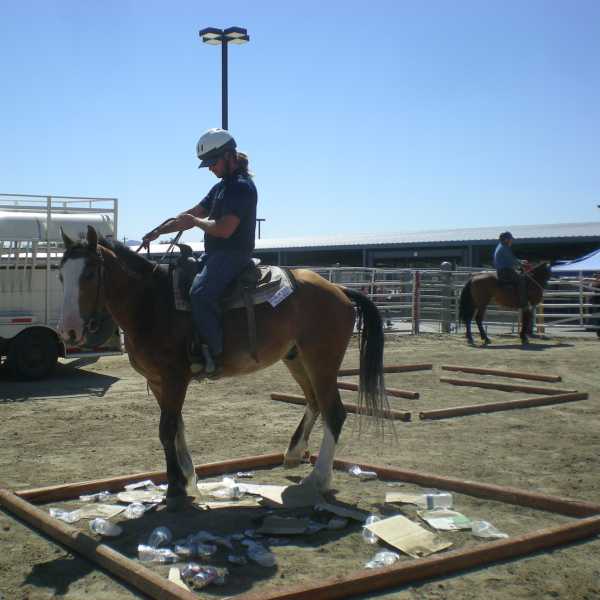 A number of links that describe the horse puzzles we employ appear at the end of this feature. Many people have developed their own challenges that in many cases are quite creative. The issue here is whether these challenges improve confidence or increase reactivity. Therefore this feature will discuss the principles of using horse puzzles and challenges for confidence building rather than dwell on the construction details of the challenges.
A number of links that describe the horse puzzles we employ appear at the end of this feature. Many people have developed their own challenges that in many cases are quite creative. The issue here is whether these challenges improve confidence or increase reactivity. Therefore this feature will discuss the principles of using horse puzzles and challenges for confidence building rather than dwell on the construction details of the challenges.
The desired result is not that a rider could sit a reactive horse, even though that skill is useful. The desired result is for the horse to process the challenge, maintain its composure, still be responsive to the rider's or handler's cues, and proceed safely. To achieve such a result, we need to be aware real-time of how horses perceive their surroundings and the tendencies and alert signals specific to the horse being handled or ridden.
Our approach to desensitizing is to create a sort of horsey amusement park. The "rides," while challenging and perhaps a little scary, need to also be fun. We also need to work at a pace that generates curiosity in the horse. A curious horse retains vital information and maintains a more solid relationship between a particular obstacle and desired performance than a horse in a highly fearful state. Pushing too hard and producing repetitive avoidance behavior only "lubricates" those survival dendrites. Even if the horse eventually accepts the challenge, at some later time when the horse is more highly stressed, it could easily choose the undesired behavior (survival behavior.) If a pattern is established where the horse is allowed to solve problems and is subsequently rewarded, the "cause and effect" pathways that are established encourage desired behavior.
Perhaps even more importantly, as the horse becomes confident with an obstacle the horse should develop greater confidence and reliability in responding to the handler / rider's cues. Such a result is achievable if the handler / rider encourages rather than pressures the horse through the challenges.
Swedish author Willy Klaeson came to Nevada to learn about wild horses. He haltered this former wild horse for the first time a couple of days prior to this image where the horse was calmly leading through several intermediate obstacles.
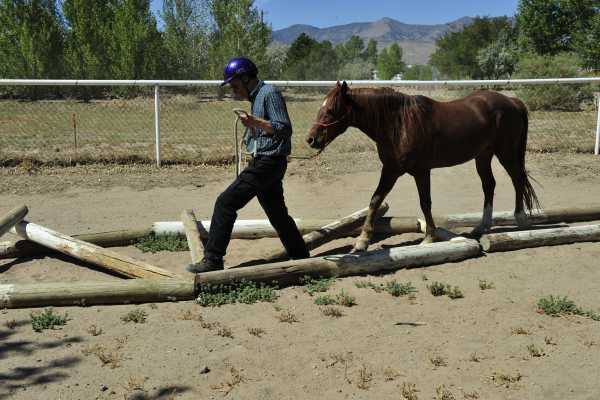
A few days later Willy calmly climbs aboard his "project".
It should be noted that Willy is a trotting horse owner, not an experienced rider.
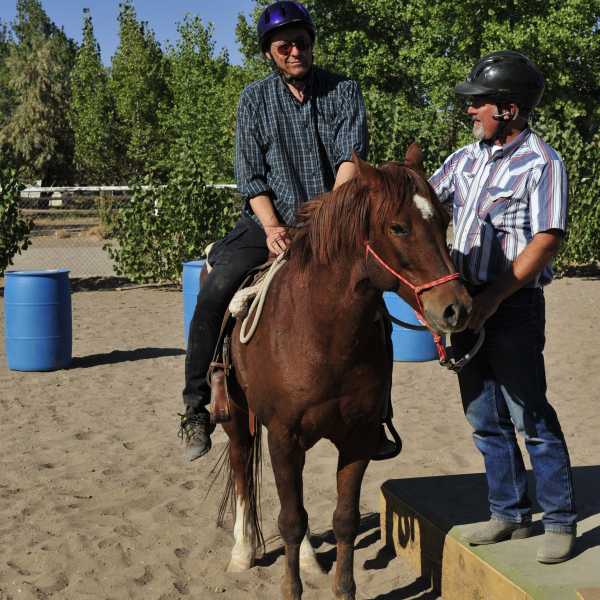
We don't do stuff like throw firecrackers at the horses or light hay bales on fire. We're not the riot squad. We are not going to condition our horses to dread what might be coming next. We've seen too many riders end up catching an unintended ride to the trauma center in these situations.
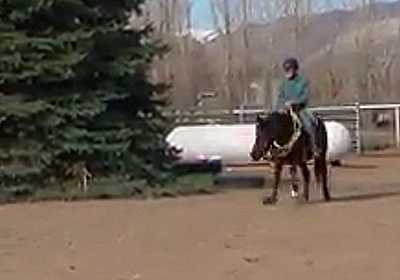 All horses will startle when surprised with the unexpected. The question that presents itself is whether the startled horse will rush into survival behavior or give the rider a moment in which to apply a proper cue.
All horses will startle when surprised with the unexpected. The question that presents itself is whether the startled horse will rush into survival behavior or give the rider a moment in which to apply a proper cue.
When horses have been conditioned to expect that the rider's cue will result in a beneficial solution, particularly when the horse can't immediately generate its own solution, the outcomes are generally much safer and more consistent. For these reasons, problem solving challenges generally prove to be the most beneficial.
| 

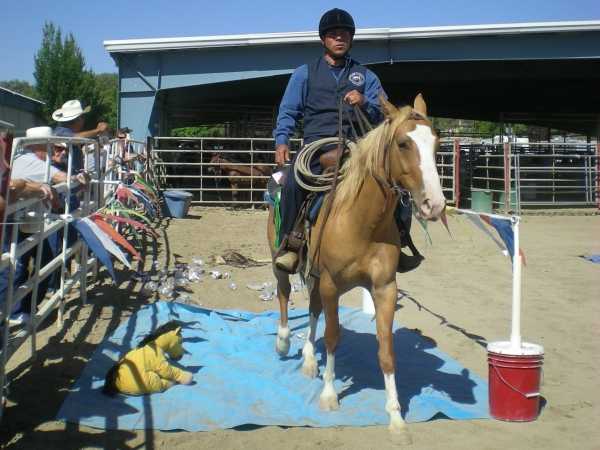
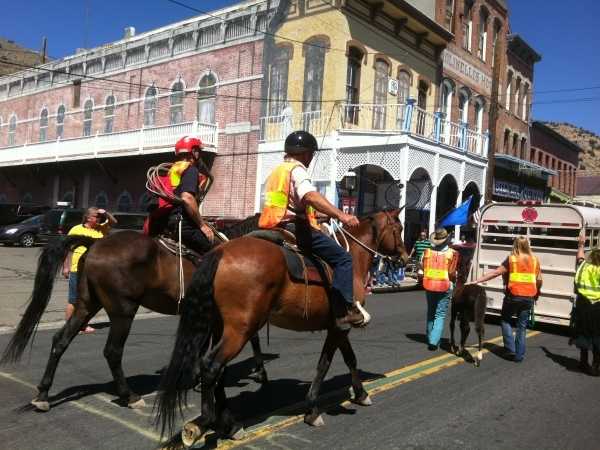
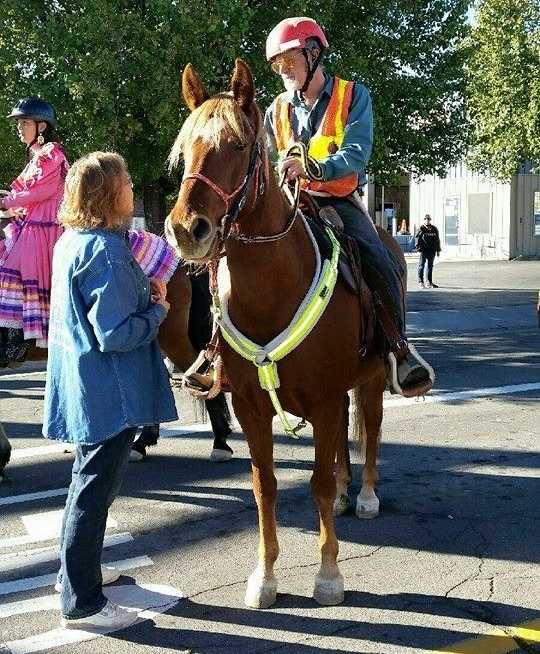
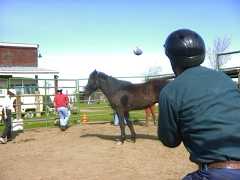
 A number of links that describe the horse puzzles we employ appear at the end of this feature. Many people have developed their own challenges that in many cases are quite creative. The issue here is whether these challenges improve confidence or increase reactivity. Therefore this feature will discuss the principles of using horse puzzles and challenges for confidence building rather than dwell on the construction details of the challenges.
A number of links that describe the horse puzzles we employ appear at the end of this feature. Many people have developed their own challenges that in many cases are quite creative. The issue here is whether these challenges improve confidence or increase reactivity. Therefore this feature will discuss the principles of using horse puzzles and challenges for confidence building rather than dwell on the construction details of the challenges.


 All horses will startle when surprised with the unexpected. The question that presents itself is whether the startled horse will rush into survival behavior or give the rider a moment in which to apply a proper cue.
All horses will startle when surprised with the unexpected. The question that presents itself is whether the startled horse will rush into survival behavior or give the rider a moment in which to apply a proper cue.